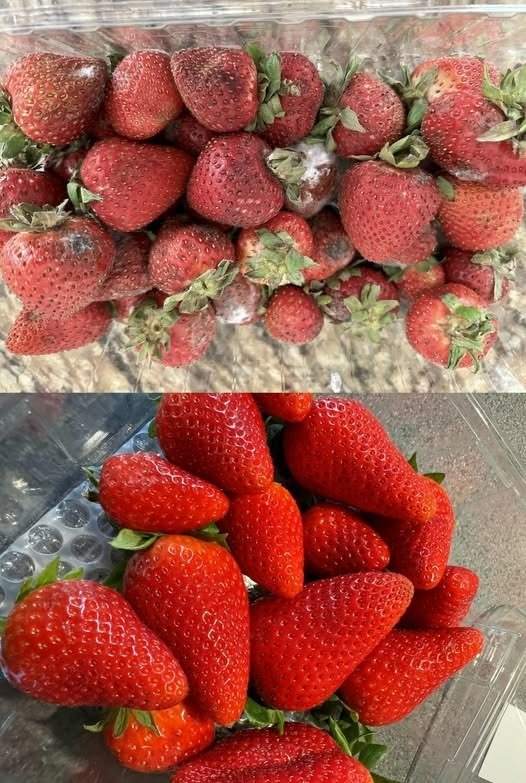ADVERTISEMENT
- Don’t wash them until you’re ready to eat them
🚫 Avoid washing them immediately after purchase: moisture accelerates spoilage.
✅ Rinse only before eating (use cold water + a little vinegar to kill bacteria). - Store them in a dry, breathable container.
Cover a container with paper towels to absorb excess moisture.
Use a vented container (or leave the lid slightly open).
Never store them in a sealed plastic bag: it traps moisture! - Keep them cool (but not too cold!)
❄️ Best place for the refrigerator: Crisper at 32–36°F (0–2°C).
🚫 Avoid the coldest part (the back of the refrigerator) to prevent frost damage. - Freeze for long-term storage
Wash, dry, and deseed the strawberries.
Spread them on a baking sheet, freeze until solid, then transfer them to a freezer bag.
Lasts up to 6 months! (Perfect for smoothies or baking). - Store them whole until ready to use
🔪 Juices are released when cut → Faster mold growth.
✅ Store whole and slice only when needed. - Separate spoiled berries immediately
. One moldy berry can ruin the whole batch!
✅ Check daily and remove any soft or spoiled strawberries. - Try a vinegar soak (for longer shelf life)
Mix 1 part white vinegar + 3 parts water. Soak strawberries for 5 minutes, rinse, and dry thoroughly.
✨ Kills bacteria and mold spores, adding 2 to 3 extra days of freshness!
How long do strawberries last?
Room temperature: 1 to 2 days
Refrigerator (unwashed, dry): 5 to 7 days
Freezer: 6 months+
Bonus: How to revive slightly wilted strawberries
Soak them in ice water for 10 to 15 minutes to make them plump again!
Final thoughts
Say goodbye to wasted strawberries with these simple tips! Would you dare to soak them in vinegar or store them dry? Let us know in the comments!
Save this guide for your next purchase!
Follow us for more food storage tips.
ADVERTISEMENT
